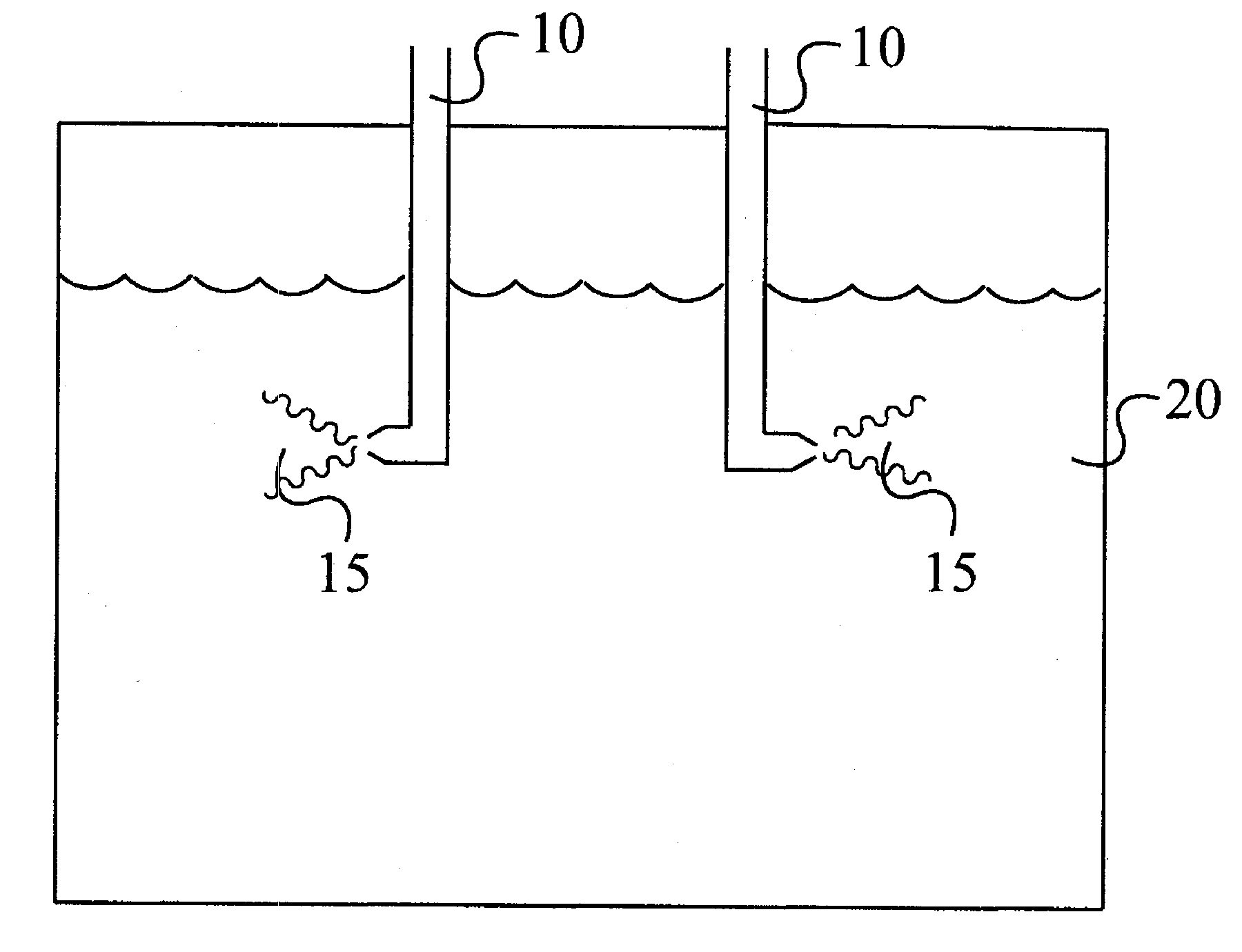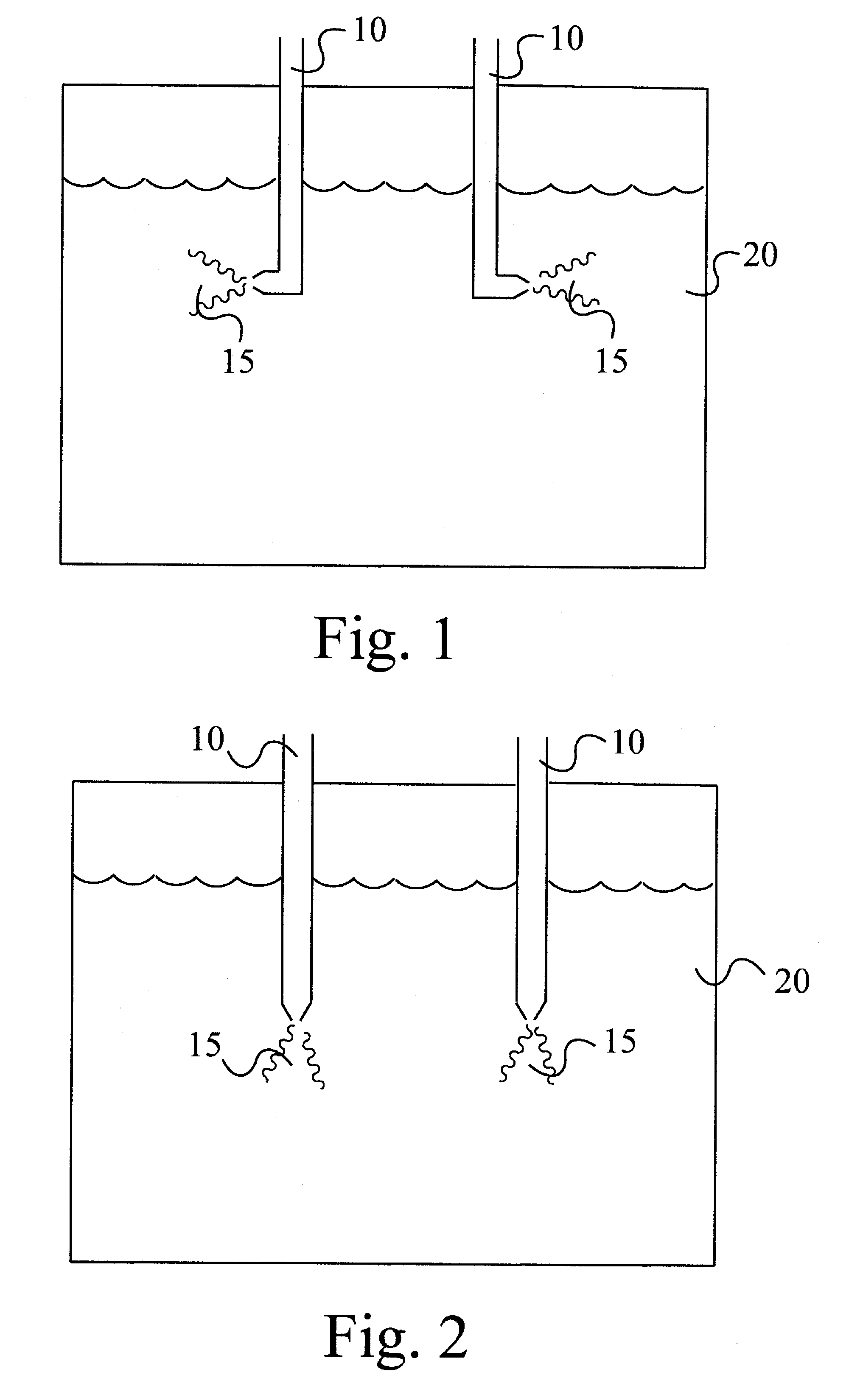Preparation and provision of high assay decabromodiphenylethane
a technology of decabromodiphenylethane and reaction-derived products, which is applied in the preparation of halogenated hydrocarbons, hydrocarbon preparation catalysts, organic chemistry, etc., can solve the problems of unsatisfactory nonabromodiphenyl oxide content in electrical and electronic products, and the discomfort of using commercial decabromodiphenyl oxid
- Summary
- Abstract
- Description
- Claims
- Application Information
AI Technical Summary
Benefits of technology
Problems solved by technology
Method used
Image
Examples
example 1
A 500 mL four-necked round bottom flask was equipped with a mechanical stirrer, a thermometer with a temperature regulator, a 1 / 16-inch ID Teflon polymer dip tube, a reflux condenser which was connected to an ice-cold caustic scrubber and a heating mantle. The flask was charged with bromine (129 mL) and anhydrous aluminum chloride (1.82 g). The contents were stirred and heated to 55° C. A solution of diphenylethane (18.2 g, 0.1 mole) in dibromomethane (18 mL, 29 wt % DPE solution) prepared earlier, was then fed to the reactor containing bromine and catalyst, sub-surface via the dip tube using a peristaltic pump, at 55° C., over a period of 6.5 hours. The reaction mixture was then stirred at reflux (65° C.) for an additional one hour. The contents were cooled to room temperature. Water (250 mL) was now added to the mix. A Barret trap was installed between the reactor and the reflux condenser and the reaction mixture was heated to remove excess bromine and solvent, while continuously ...
example 2
This reaction was an exact repeat of Example 1 except that two dip tubes were employed to feed the DPE solution and the feed rate was the same through each dip tube. The feed was over in 3.08 hours. The product was worked up as above. A small sample was analyzed by GC as usual which showed this sample had an assay of 99.88 GC area %, which is very close to the above run in which only one dip tube had been employed. This run demonstrated that multiple dip tubes can be used to cut the DPE feed time significantly, without affecting product assay very much.
example 3
A 1-L round bottom flask was equipped exactly as in the above Examples. The flask was charged with bromine (12.5 moles, 1997.5 g, 644.4 mL, 150% stoichiometric excess) and anhydrous aluminum chloride (14 g, 15 wt. % based on the amount of DPE used). The slurry was stirred and heated to 55° C. Prior to this, a 44.9 wt % DPE solution was prepared by dissolving DPE (91.1 g, 0.5 mole) in dibromomethane (45 mL). This solution was now fed to the reactor containing bromine and catalyst at 55° C. as usual, via a 1 / 16-inch (ca. 0.16 cm) I.D. Teflon dip tube, sub-surface to bromine, at 55° C. The feed was over in 8 hours. The reaction mixture was now heated and stirred at reflux (63° C.) for an additional 30 minutes. The reaction mixture was now cooled to room temperature and water (300 mL) was added. The equipment was set for steam distillation of bromine and solvent by installing a Barret trap. The reaction mixture and water slurry was now heated and bromine / solvent was removed overhead whi...
PUM
| Property | Measurement | Unit |
|---|---|---|
| temperature | aaaaa | aaaaa |
| temperature | aaaaa | aaaaa |
| temperature | aaaaa | aaaaa |
Abstract
Description
Claims
Application Information
 Login to View More
Login to View More - R&D
- Intellectual Property
- Life Sciences
- Materials
- Tech Scout
- Unparalleled Data Quality
- Higher Quality Content
- 60% Fewer Hallucinations
Browse by: Latest US Patents, China's latest patents, Technical Efficacy Thesaurus, Application Domain, Technology Topic, Popular Technical Reports.
© 2025 PatSnap. All rights reserved.Legal|Privacy policy|Modern Slavery Act Transparency Statement|Sitemap|About US| Contact US: help@patsnap.com



